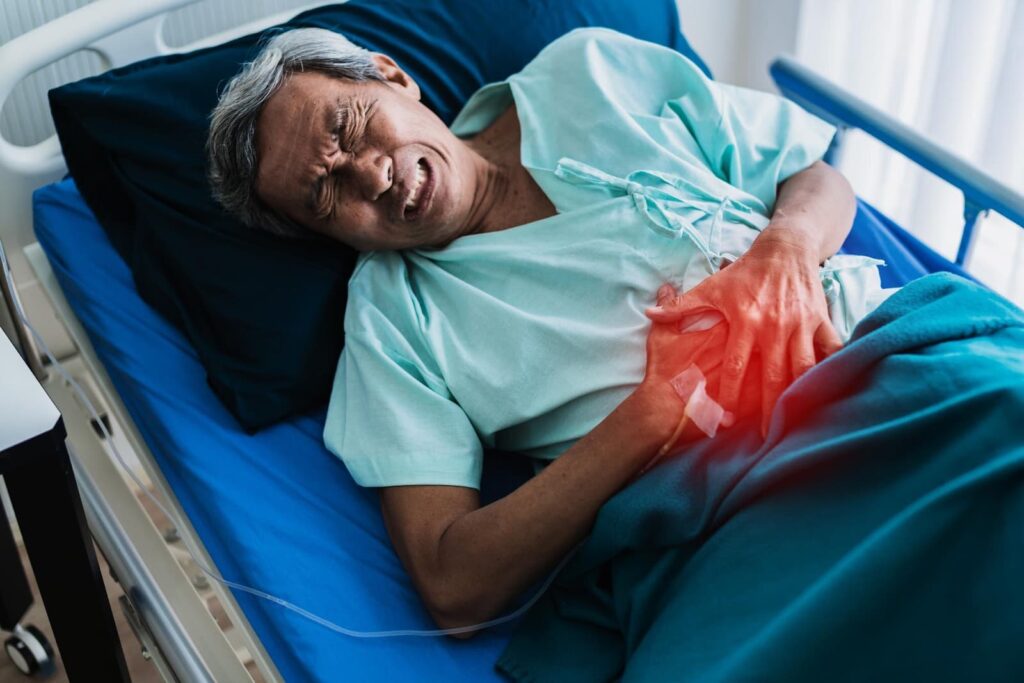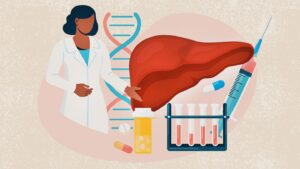
Everything You Need To Know About Fatty Liver Diseases
Our body is like a complex orchestra, where various parts must operate in unison to keep us healthy. The liver, however, plays the role of a conductor. It plays many important roles that are necessary for our vitality and strength. However, fatty liver disease remains the silent enemy of the liver organ. Our lives have been invaded by these conditions without our knowledge and they put a lot of pressure on our livers which we can’t ignore. Therefore, if this is your first time or you want to gain more understanding concerning this subject then this wide-ranging publication will be perfect for you as we explore all there is to know about fatty liver diseases including causes, symptoms, diagnosis, stages, treatment options,nutrition requirements and preventions’. We will demystify them and educate people with wrong notions concerning their living livers.
Introduction to Fatty Liver Disease
The liver, a vital organ in the human body, can be adversely affected by the accumulation of excess fat within its cells, leading to what is known as a fatty liver. While a certain amount of fat in liver cells is normal, when the fat content exceeds 10% of the liver’s weight, it is classified as a fatty liver. Despite the prevalence of this condition, many individuals may not be familiar with the term “fatty liver disease.” This silent ailment, which can progress to liver damage, failure, and other severe complications, currently affects one in every three individuals and continues to rise steadily.
Understanding the Causes of Fatty Liver Disease
Genetic Predisposition
Genetic factors can significantly influence an individual’s susceptibility to developing fatty liver disease. Certain genetic variations can predispose some people to accumulate fat in their livers more easily than others.
Poor Dietary Habits
Consuming a diet high in unhealthy fats, sugars, and processed foods can contribute to the development of fatty liver disease. Excessive intake of calories, especially from sources like sugary beverages and fast food, can overload the liver and lead to fat accumulation.
Sedentary Lifestyle
Lack of physical activity and prolonged periods of inactivity can hinder the body’s ability to metabolize fats efficiently. Regular exercise is crucial for maintaining a healthy liver and preventing the buildup of fat in liver cells.
What Are The 4 Stages of Fatty Liver Disease?
Fatty liver disease progresses through four distinct stages, each characterized by varying degrees of liver damage and severity of symptoms. Understanding these stages is essential for early detection and effective management of the condition.
| Stage | Description |
|---|---|
| 1. Steatosis | In this initial stage, excess fat accumulates in the liver cells, but there is no inflammation or liver cell damage. |
| 2. Steatohepatitis | At this stage, inflammation occurs in the liver along with fat accumulation, leading to liver cell damage. |
| 3. Fibrosis | Fibrous tissue starts to form in the liver, indicating the progression of liver damage. |
| 4. Cirrhosis | This advanced stage is characterized by extensive scarring of the liver tissue, impairing liver function and potentially leading to liver failure. |
Each stage requires specific interventions and lifestyle modifications to prevent further progression and improve liver health.
What Are The 5 Risk Factors For Liver Disease?
Obesity
Excess body weight, especially abdominal obesity, is a significant risk factor for fatty obesity disease. Fat accumulated around the abdomen can directly affect the obesity and increase the likelihood of developing obesity-related complications.
Diabetes
Individuals with diabetes are at a higher risk of developing fatty obesity disease due to insulin resistance and impaired glucose metabolism. Uncontrolled diabetes can exacerbate obesity damage and accelerate disease progression.
High Cholesterol
Elevated levels of cholesterol in the blood can contribute to the accumulation of fat in the obesity, increasing the risk of fatty obesity disease. Managing cholesterol levels through diet and medication is crucial for obesity health.
Alcohol Consumption
Excessive alcohol consumption is a leading cause of alcoholic fatty obesity disease. Chronic alcohol abuse can result in obesity inflammation, damage, and eventually cirrhosis. Limiting alcohol intake is essential for preventing obesity-related complications.
Medications
Certain medications, such as corticosteroids, tamoxifen, and methotrexate, can contribute to obesity damage and increase the risk of fatty obesity disease. It is important to consult a healthcare provider before taking any medications to assess their potential impact on obesity health.

Symptoms of Fatty Liver Disease
Fatty liver disease is often asymptomatic in its early stages, making it challenging to diagnose without specific tests. However, as the condition progresses, individuals may experience the following symptoms:
- Fatigue: Persistent tiredness and lack of energy;
- Abdominal Pain: Discomfort or pain in the upper right side of the abdomen;
- Weight Loss: Unexplained weight loss or loss of appetite;
- Jaundice: Yellowing of the skin and eyes;
- Swelling: Swelling in the legs and abdomen due to fluid retention.
These symptoms may vary in intensity and frequency depending on the stage and severity of fatty liver disease.
Types of Fatty Liver Disease – Alcoholic and Nonalcoholic
Alcoholic Fatty Liver Disease
Alcoholic fatty liver disease is caused by excessive alcohol consumption, which leads to fat accumulation in the liver cells. It can progress from simple fatty liver to more severe conditions like alcoholic hepatitis and cirrhosis if alcohol intake is not reduced or eliminated.
Nonalcoholic Fatty Liver Disease (NAFLD)
Nonalcoholic fatty liver disease encompasses a range of liver conditions unrelated to alcohol consumption. It includes simple fatty liver, nonalcoholic steatohepatitis (NASH), fibrosis, and cirrhosis. NAFLD is closely associated with obesity, diabetes, and metabolic syndrome.
Diagnosis of Fatty Liver Disease
Physical Examination
During a physical exam, healthcare providers may palpate the abdomen to check for liver enlargement and assess overall health status.
Blood Tests
Blood tests can detect elevated liver enzymes and markers of liver damage, indicating the presence of fatty liver disease. Additional tests may be recommended to rule out other liver conditions.
Imaging Studies
Ultrasound, CT scans, and MRI scans can provide detailed images of the liver, helping to visualize fat accumulation, inflammation, and liver damage.
Treatment and Prevention of Fatty Liver Disease
Lifestyle Modifications
Implementing healthy lifestyle changes, such as maintaining a balanced diet, engaging in regular exercise, and avoiding alcohol and tobacco, is crucial for managing and preventing fatty liver disease.
Medications
In some cases, healthcare providers may prescribe medications to manage underlying conditions like diabetes, high cholesterol, or obesity, which can contribute to fatty liver disease.
Surgical Interventions
Surgical procedures like bariatric surgery may be considered for individuals with severe obesity and fatty liver disease to promote weight loss and improve liver health.
Diet for Fatty Liver Disease
A well-balanced diet plays a key role in managing fatty liver disease and supporting liver health. Consider incorporating the following dietary recommendations:
- Limit Saturated Fats: Reduce consumption of saturated fats found in red meat, butter, and full-fat dairy products;
- Increase Fiber Intake: Include plenty of fruits, vegetables, whole grains, and legumes in your diet to promote digestion and regulate blood sugar levels;
- Choose Lean Proteins: Opt for lean sources of protein such as poultry, fish, tofu, and legumes to reduce fat intake;
- Avoid Sugary Foods: Minimize intake of sugary beverages, desserts, and processed snacks to prevent spikes in blood sugar levels.
Adhering to a nutritious diet can help manage weight, improve insulin sensitivity, and reduce liver fat accumulation.

Life Expectancy with Fatty Liver Disease
Life expectancy for individuals with fatty liver disease varies depending on several factors, including the underlying cause, disease progression, and adherence to treatment and lifestyle modifications. In general, early diagnosis and proactive management can significantly improve outcomes and prolong life expectancy for individuals with fatty liver disease.
Factors Influencing Life Expectancy
- Disease Severity: The stage and severity of fatty liver disease play a critical role in determining life expectancy. Advanced stages like cirrhosis may shorten life expectancy without appropriate intervention;
- Comorbidities: Presence of other health conditions such as diabetes, obesity, and cardiovascular disease can impact life expectancy and complicate the management of fatty liver disease;
- Treatment Adherence: Consistent adherence to treatment plans, lifestyle modifications, and follow-up care can positively influence life expectancy and overall health outcomes.
Prognosis and Outlook
With timely diagnosis, comprehensive treatment, and ongoing monitoring, individuals with fatty liver disease can achieve favorable outcomes and lead fulfilling lives. Close collaboration with healthcare providers, adherence to medical advice, and proactive self-care are essential for optimizing life expectancy and quality of life.
Conclusion
Fatty liver disease poses a significant health challenge affecting a substantial portion of the population worldwide. By understanding the causes, symptoms, stages, and treatment options for fatty liver disease, individuals can take proactive steps to safeguard their liver health and overall well-being. Embracing a healthy lifestyle, including a balanced diet, regular exercise, and avoidance of harmful habits, is paramount in preventing and managing fatty liver disease. With early intervention, diligent monitoring, and a multidisciplinary approach to care, individuals can enhance their life expectancy and enjoy a healthier future free from the burdens of fatty liver disease.

